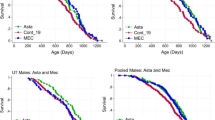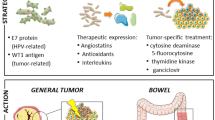Abstract
β-glucan is an important polysaccharide due to its medicinal properties of stimulating the immune system and preventing chronic diseases such as cancer. The aim of the present study was to determine the anticlastogenic effect of β-glucan in cells exposed to ultraviolet radiation (UV). Chromosome aberration assay was performed in drug-metabolizing cells (HTC) and non drug-metabolizing cells (CHO-K1 and repair-deficient CHO-xrs5), using different treatment protocols. Continuous treatment (UV + β-glucan) was not effective in reducing the DNA damage only in CHO-xrs5 cells. However, the pre-treatment protocol (β-glucan before UV exposition) was effective in reducing DNA damage only in CHO-K1 cells. In post-treatment (β-glucan after UV exposition) did not show significative anticlastogenic effects, although there was a tendency toward prevention. The data suggest that β-glucan has more than one action mechanism, being capable of exerting desmutagenic as well as bio-antimutagenic action. The findings also suggest that the presence of the xenobiotic metabolizing system can reduce the chemopreventive capacity of β-glucan. Therefore, these results indicate that β-glucan from Saccharomyces cerevisiae can be used in the prevention and/or reduction of DNA damage.
Similar content being viewed by others
References
Ames BN, Durston WE, Yamasaki E, Lee FD (1973) Carcinogens are mutagens. A simple test system combining liver homogenates for activation and bacteria for detection. Natl Acad Sci USA 70:2281–2285
Angeli JPF, Ribeiro LR, Gonzaga MLC, Soares SA, Ricardo MPSN, Tsuboy MS, Stidl R, Knasmuller S, Linhares RE, Mantovani MS (2006) Protective effects of β-glucan extracted from Agaricus brasiliensis against chemically induced DNA damage in human lymphocytes. Cell Biol Toxicol 22:285–291
Arvanitoyannis IS, Van Houwelingen-Koukaliaroglou M (2005) Functional foods: a survey of health claims, pros and cons, and current legislation. Crit Rev Food Sci Nutr 45:385–404
Cisneros RL, Gibson FC, Tzianabos AO (1996) Passive transfer of poly-(1–6)-β-glucotriosyl-(1–3)-β-glucopyranose glucan protection against lethal infection in an animal model of intra-abdominal sepsis. Infect Immun 64:2201–2205
De Flora S (1998) Mechanisms of inhibitors of mutagenesis and carcinogenesis. Mutat Res 402:151–158
Ferrari CKB (2001) Oxidative stress pathophysiology searching for an effective antioxidant protection. Int Med J 8:175–184
Ferrari CKB, Torres EAFS (2002) New dietetic compounds with anticarcinogenic properties. Rev Bras Canc 48:375–382
Flagg EW, Coates RJ, Greenberg RS (1995) Epidemiologic studies of antioxidants and cancer in humans. J Am Coll Nutr 14:419–427
Kada T, Shimoi K (1987) Desmutgens and bio-antimutagens: their modes of action. Bioessays 7:113–116
Kada T, Inoue T, Namiki N (1982) Environmental desmutagens and antidesmutagens. In: Klekowski EJ (ed) Environmental mutagens and plant biology. Praeger, New York, pp 137–151
Kim YW, Kim KH, Choi HJ, Lee DS (2005) Anti-diabetic activity of β-glucans and their enzymatically hydrolyzed oligosaccharides from Agaricus blazei. Biotechnol Lett 27:483–487
Krizkova L, Durackova Z, Sandula J, Slamenova D, Sasinkova V, Sivonova M, Krajkovic J (2003) Fungal beta-(1–3)-D-glucan derivatives exhibit high antioxidative and antimutagenic activity in vitro. Anticancer Res 23:2751–2756
Kubala L, Ruzickova J, Nickova K, Sandula J, Ciz M, Lojek A (2003) The effect of (1 → 3)-β-D-glucans, carboxymethylglucan and schizophyllan on human leukocytes in vitro. Carbohydr Res 338:2835–2840
Kuroda Y, Hara Y (1999) Antimutagenic and anticarcinogenic activity of tea polyphenois. Mutat Res 436:69–97
Lin H, She Y, Cassileth B, Sirotnak F, Rundles SC (2004) Maitake beta-glucan MD-fraction enhances bone marrow colony formation and reduces doxorubicin toxicity in vitro. Int Immunopharmacol 4:91–99
Mantovani MS, Bellini MF, Angeli JPF, Ribeiro LR (2008) β-glucans in promoting health: prevention against mutation and cancer. Mutat Res 658:154–161
Oliveira RJ, Ribeiro LR, Silva AF, Matuo R, Mantovani MS (2006) Evaluation of antimutagenic activity and mechanisms of action of β-glucan from barley, in CHO-K1 and HTC cell lines using the micronucleus test. Toxicol In Vitro 20:1225–1233
Oliveira RJ, Matuo R, Silva AF, Matiazi HJ, Mantovani MS, Ribeiro LR (2007) Protective effect of beta-glucan extracted from Saccharomyces cerevisiae, against DNA damage and cytotoxicity in wild-type (k1) and repair deficient (xrs5) CHO cells. Toxicol In Vitro 21:41–52
Riccardi G, Capaldo B, Vaccaro O (2005) Functional foods in the management of obesity and type 2 diabetes. Curr Opin Clin Nutr Metab Care 8:630–635
Riezzo G, Chiloiro M, Russo F (2005) Functional Foods: Salient Features and Clinical Applications. Immune Endocr Metabol Disord 5:331–337
Shimizu T (2010) The role of macrophage migration inhibitory factor (MIF) in ultraviolet radiation-induced carcinogenesis. Cancers 2:1555–1564
Sinha RP, Häder D-P (2002) UV-induced DNA damage and repair: a review. Photochem Photobiol Sci 1:225–236
Slameñova D, Labaj J, Krizkova L, Kogan G, Sandula J, Bresgen N, Eckl P (2003) Protective effects of fungal (1 → 3)-β-D-glucan derivatives against oxidative DNA lesions in V79 hamster lung cells. Cancer Lett 198:153–160
Takahashi H, Ohno N, Adachi Y, Yadomae T (2001) Association of immunological disorders in tethal side effect of NSAIDs on β-glucan-administered mice. FEMS Immunol Med Microbiol 31:1–14
Tohamy AA, El-Ghor AA, El-Nahas SM, Noshy MM (2003) β-Glucan inhibits the genotoxicity of cyclophosphamide, adramycin and cisplatin. Mutat Res 541:45–53
Tzianabos AO, Cisneros RL (1996) Prophylaxis with the immunomodulator PGG glucan enhances antibiotic efficacy in rats infected with antibiotic-resistant bacteria. Ann NY Acad Sci 797:285–287
Vargas MA, Geihs MA, Maciel FE, Cruz BP, Nery LEM, Allodi S (2011) The effects of UV radiation on the visual system of the crab Neohelice granulata: a protective role of melatonin. Comp Biochem Physiol C Toxicol Pharmacol 154:427–434
Waters MD, Brady AL, Stack HF, Brockman HE (1990) Antimutagenicity profiles for some model compounds. Mutat Res 238:57–85
Weisburger JH (1999) Mechanisms of action of antioxidants as exemplified in vegetables, tomatoes and tea. Food Chem Toxicol 37:943–948
Weisburger JH (2000) Eat to live, not live to eat. Nutrition 16:767–773
Zhang S, Hunter DJ, Forman MR, Rosner BA, Speizer FE, Colditz GA, Manson JE, Hankison SE, Willett WC (1999) Dietary carotenoids and vitamins A, C, and E and risk of breast cancer. J Natl Cancer Inst 91:547–556
Zimmerman JW, Lindermuth J, Fish PA, Palace GP, Stevenson TT, Demong DE (1998) A novel carbohydrate-glycosphingolipid interaction between a β-(1–3)-glucan immunomodulator, PGG-glucan, and lactosylceramide of human leukocytes. J Biol Chem 273:22014–22020
Acknowledgments
This study was supported by Conselho Nacional de Desenvolvimento Científico e Tecnológico, Coordenação de Aperfeiçoamento de Pessoal de Nível Superior and Fundação Araucária. We also thank Dr. A. Leyva for English language editing of the manuscript.
Author information
Authors and Affiliations
Corresponding author
Rights and permissions
About this article
Cite this article
da Silva, A.F., Oliveira, R.J., Niwa, A.M. et al. Anticlastogenic effect of β-glucan, extracted from Saccharomyces cerevisiae, on cultured cells exposed to ultraviolet radiation. Cytotechnology 65, 41–48 (2013). https://doi.org/10.1007/s10616-012-9448-z
Received:
Accepted:
Published:
Issue Date:
DOI: https://doi.org/10.1007/s10616-012-9448-z




